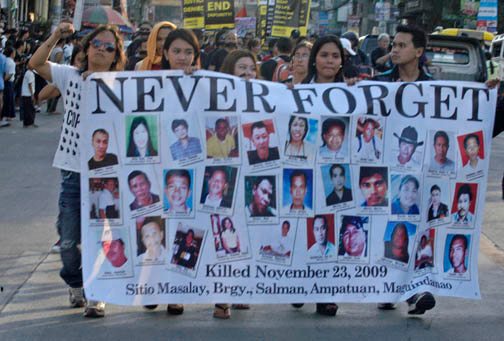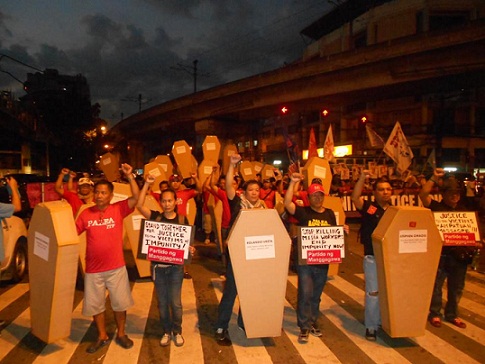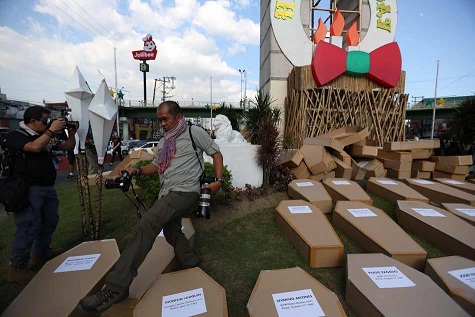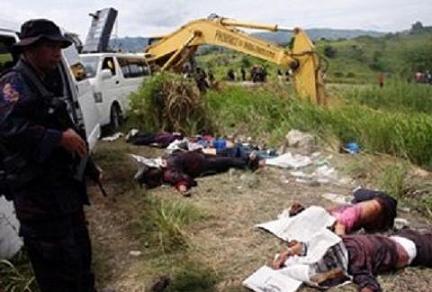THE BUREAU OF INTERNAL REVENUE slapped yet another lawyer linked to the controversial Ampautan clan with tax evasion charges, the second such lawyer to be charged for the same offence in just two months.
Internal Revenue Commissioner Kim Henares identified the lawyer as Atty. Redemberto R. Villanueva, who was found by the BIR to have a total tax liability of P 37 million pesos for the years 2010 and 2011.
Key to the tax case against Villanueva is his purchase of a large house in ritzy Dasmarinas Village, Makati for P 58.47 million in 2010, Henares said. Henares said the BIR finds it strange that Villanueva could afford to buy such a house when he only paid P110,788 in income taxes for the same year. Henares said the income tax that Villanueva paid for that year was far out of proportion to the amount of money he spent for the purchase of the house in Dasmarinas.
“We looked at the expenditure method,” Henares said. “If you have all that money to spend, then you generated an income for that year.”
Interestingly, the house in question has been placed under a provisional asset preservation order or PAPO by a Manila court, after it was included by the Anti Money Laundering Council as among the assets allegedly belonging to former Autonomous Region in Muslim Mindanao Governor Zaldy Ampatuan, who is one of the accused in the 2009 Maguindanao Massacre.
The AMLC claims that the Dasmarinas property is one of at least 162 properties illegally acquired by members of the Ampatuan clan using government funds. The AMLC had also filed a forfeiture case against other assets in the name of Atty. Villanueva, in the belief that Villanueva was holding these assets for Zaldy Ampatuan.
Sources of the Philippine Center for Investigative Journalism had also revealed that the Dasmarinas property was regularly used by Zaldy Ampatuan whenever he traveled to Manila.
In addition to the Dasmarinas property, Henares said Villanueva purchased a parking slot for the Eisenhower condominium in San Juan for half a million pesos in 2010. This was unusual, since Villanueva would not buy a condominium unit in the same building until the next year, Henares said. It was only in 2011 when Villanueva would buy a condo unit in Eisenhower for P2.56 million.
Also in 2011, Villanueva bought another property in Eastwood Lafayette for P 2.62 million. Yet while he had the money to purchase these two condominium units, Villanueva would only pay income tax of P 3,723 for that same year, Henares said.
All in all, Villanueva has a tax liability of P 36.93 million for those two years, she added.
Henares said that the BIR was not targetting Ampatuan lawyers, as the Bureau is not even certain if Villanueva is representing the Ampatuans in any of the court cases. However, she acknowledged that the investigation into Villanueva was triggered by reports that he was responsible for purchasing the Dasmarinas house for the Ampatuans.
“That was what triggered the investigation, that it was his (Ampatuan’s) house, and that there was a sale, and a sale was made to the lawyer,” Henares said. “Pag nagbayad naman ng tamang buwis ang abugado, wala namang problema. Ang problema, pag hindi nagrereport ng tamang income na sapat para bilhin ang bahay na ito.”
(If the lawyer had only paid the right taxes, there wouldn’t be a problem. The problem is that he did not report the correct income sufficient to make the purchase.)
Villanueva was the second lawyer linked to the Ampatuans to be charged for tax evasion by the BIR.
Earlier in December, the BIR also filed tax evasion charges against Atty. Arnel Manaloto after it found that the income taxes paid by Manaloto were inconsistent with his purchase of 8 properties previously owned by former Datu Unsay Mayor Andal Ampatuan Junior. The PCIJ earlier reported that Manaloto purchased the eight properties from Andal Jr for P 20 million.
Manaloto is a lawyer for Andal Jr. in some of his cases. More interestingly, the eight properties in question were to have been the subject of a civil forfeiture case by the government – until Manaloto bought them from his client.




